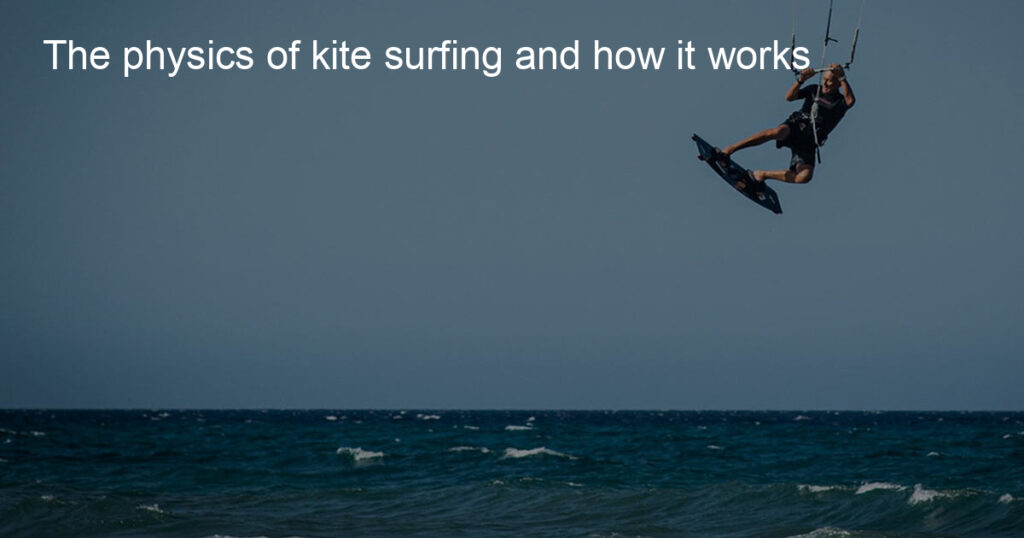Have you ever wondered how kite surfers stay up on the water? It’s all thanks to the power of the wind! In this post, we’ll explore the physics behind kite surfing and how it works. Whether you’re a kite surfer yourself or just interested in the science behind it, read on to learn more!
What type of power do kite surfers use?
Kite surfing is a thrilling and challenging sport that uses the power of the wind to propel riders across the surface of the water. Kite surfers harness two distinct types of wind-powered energy: lift, which generates thrust; and pull, which leads to speed and movement.
Lift is created when air passes over a kite’s wings and propels it upwards, while pull gives the kite surfer direction as they sail through the water. The combination of lift and pull generated by their kites gives kite surfers enough power to perform bold maneuvers that keep spectators on their feet! Thus, it’s evident just how profound an impact wind can have when it comes to this daring sport.
How do kite surfers not fly away?
Kite surfers stay connected to their boards as they are essentially controlling the kite above them, rather than just letting it drag them off. To make sure they don’t fly away, they need to ensure that the kite doesn’t over-steer too much wind and send them airborne unintentionally!
It’s a carefully calculated balance of speed, wind direction, and rider weight that gives them the power to stay afloat without shooting off across the sky. With years of practice and dedication, these skilled athletes can be found showing off their agility as well as their control at various beaches and waterfront locations.
How do you control speed in kite surfing?
Controlling your speed while kite surfing is an essential part of safe and enjoyable riding. To do so, the most important tool is to master your kite power control: by adjusting the angle of your kite, you can effectively control the direction as well as the speed of your surfboard. To slow down, move the kite around right into the wind – this will reduce the power and help you slow down.
Similarly, to speed up, move your kite away from the wind to create more lift on your board which can help build good momentum for some great rides! Kiting techniques are also a useful way to stay in control – skillful edging and other technical techniques can be very effective in controlling speed and getting comfortable on the board.
Finally, make sure to always take safety precautions when learning new techniques; be smart and have fun!
How do you kite surf in strong winds?
Kite surfing in strong winds is thrilling, but you should always make sure you understand the risks before jumping right in. The best tip for kite surfing in high winds is to hone your technique first, like getting good at using your weight when turning and transitioning.
Aim to learn how to safely depower and disconnect from the kite if anytime you feel things are getting out of hand. With the right knowledge and confidence, strong wind kiting can be an incredible experience!
What is the best wind speed for kite surfing?
Kite surfing is a popular sport that is becoming increasingly popular by the day. But Kite surfing requires a lot of skill and be dangerous if done without caution. One of the most important details for Kite surfers to consider is wind speed. Getting the right wind speed can make or break the experience- you don’t want too little or too much to truly have the best time and be safe while doing it.
Generally, any wind speed between 12-35 mph will make for good kite surfing conditions. Anything below 12 will likely be too light, making it harder to ride and practice tricks, and anything over 35 may become too strong to stay on track! What’s more, always check with local beaches regarding specific wind speeds before heading out for kitesurfing.
What is the difference between kite surfing and kiteboarding?
Kite surfing and kiteboarding are two exciting, adrenaline-pumping water activities. Both involve a board and a kite, but there are subtle differences between the two. Kite surfing tends to emphasize aggressive jumping maneuvers and tricks since the foil board has no fins for directional stability.
On the other hand, due to its four fins, kiteboarding is more about carving turns on large waves. Additionally, kiteboards tend to be bigger than surfboards to combat the increased speed from being propelled by an external source. All in all, both sports push physical limits while giving users a thrilling ride through the waves!
Conclusion and Takeaways
Kite surfing is an amazing sport that provides an adrenaline rush and thrills inexperienced and experienced riders alike. The physics of kite surfing makes it even more incredible, as the same force that keeps a kite afloat in the sky can help you ride the waves. Now that you have a better understanding of how it works, why not give it a try?
It’s sure to be an enjoyable adventure as long as you follow safety protocols. Plus, mastering the physics behind this remarkable activity is not only educational but also immensely satisfying. With kite surfing, the possibilities are endless so don’t let anything hold you back!








